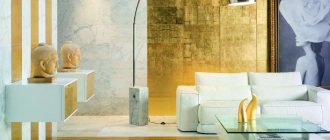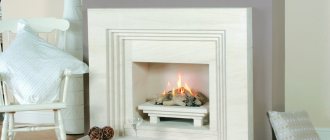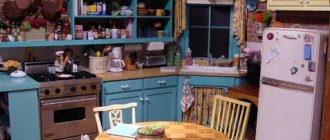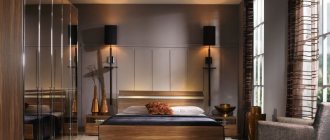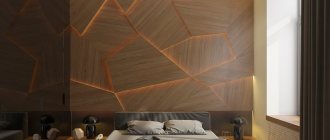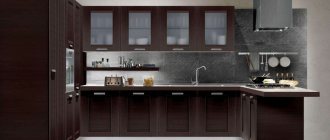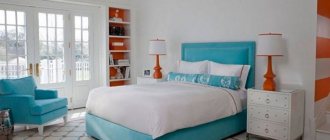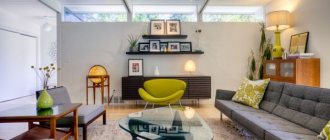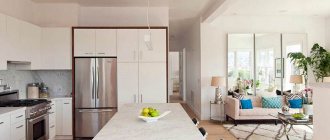Baroque as a style in the interior appeared in the 17th century in Italy, but its elements still find their admirers. If you are one of them, make yourself comfortable, we have something to share.
Two works by Giovanni Lorenzo Bernini. On the left is the Church of Sant'Andrea al Quirinale, opened in 1670 in Rome. On the right is the Chair of St. Peter in St. Peter's Basilica in the Vatican, opened in 1666
The history of the Baroque style
The concept of baroque was introduced into use in 1850 to designate a style that was formed during the reign of Louis XIV in France and Peter I in Russia. This is a palace style that shaped the magnificent appearance of famous monumental architectural ensembles - Versailles, Peterhof, Schönbrunn. The march of this style around the world began in Western Europe. The scattered German principalities, Italian and French cities were the first to see the luxury and splendor of Baroque buildings and interiors.
The style entered Russia a little later. Only at the end of the 17th century did Golitsyn and Naryshkin decorate their residences in the European style, and then the style reached St. Petersburg. The style of buildings erected at that time was named after the ruler (owner of the property). There are still such concepts as Golitsyn or Peter the Great baroque.
Baroque architectural forms are oval, rectangle, square, circle. A symmetrical, correctly built room with right angles and circles is characteristic of Baroque interiors. Historical interiors in the Baroque style were decorated with colonnades, flights of stairs with marble balusters, portals with paintings and sculptures.
In the 18th century, the Baroque style in the interior became even more pompous, and the symmetry and color saturation of the furnishings were lost. The rooms began to be decorated in a more feminine, openwork manner. There was even more gilding and curls in the interiors. Thus, Baroque gradually transformed into Rococo. However, unlike Baroque, it was used only to create interiors. No buildings were built in the Rococo style.
Decorative items used
Forming the appearance of a historical style in the interior, the room is decorated with the following decorative items:
- painted porcelain dishes;
- sculptures and figurines in expressive poses;
- porcelain floor vases;
- reproductions of paintings by Caravaggio and Rubens;
- tapestries and frescoes;
- mirrors in carved frames.
An important role in decorating a baroque room is played by the design of the walls and ceiling. The use of stucco elements, gilded elements, and wall paintings creates a royal style in the interior.
Baroque decor items:
History of origin
It appeared towards the end of the 17th century, first in Rome, and later took root in Venice and Florence, after which it conquered all of Europe. The Baroque style in the interior came into fashion under Louis XIV, the peak of its popularity was the 18th century, and now there are also a considerable number of adherents of this trend.
The premises, decorated in the Baroque spirit, are reminiscent of royal palaces, replete with expensive ornate decoration, everything here is large-scale, intricate, even deliberately flashy. Initially, the unusualness and whimsicality of this trend were put at the service of noble persons and high-ranking ministers of the church in order to emphasize their wealth and power. Therefore, any element of furniture or decor pathetically declared the wealth of the owner.
The beginning of the Baroque era was the end of traditionalism and adherence to the classics. In the interior, as in all other areas, lush and extraordinary forms, dynamism, and contrasting color schemes are welcomed.
Textile
Baroque in the interior is formed by an abundance of plain and patterned textiles. For furniture upholstery, bedspreads, curtains, and tablecloths, choose satin, silk, brocade, and smooth velvet. Fabric connects furniture and interior items to each other, creating harmony and unity. Usually, one type of fabric is chosen for the upholstery of sofas, armchairs and chairs. Curtains are matched to match the carpet or wallpaper fragments.
Baroque curtains are a theater curtain. With cascading waves, draperies, and an abundance of fabric.
When choosing textiles for window decoration, they give preference to the following types of curtains:
- multilayer with tiebacks;
- Austrian with theatrical drapery;
- lambrequins with ties, frills, swags.
Textiles are decorated with tiebacks, gold embroidery, tassels, bows, and brooches. The bedroom creates the image of a royal boudoir with the help of luxurious textile decoration. The quilted satin bedspread covering the bed is complemented by decorative pillows with a frilly edge. A natural carpet with a pattern is laid on the floor. The corner for reading and drinking tea is furnished with a soft armchair and a silk upholstery.
Main features
It cannot be confused with other directions. Solemnity and pomp are the main features. All small details should complement each other and form a single whole. The main features of baroque style room decor are:
- Large spaces are being decorated. This style is not suitable for small spaces. In small modern apartments you can use only some of its elements. Furniture and room decor details have characteristic smooth curved lines. The Baroque style uses round and rectangular shapes, vaulted structures, and massive columns.
- An abundance of decorative items. Design in the Baroque style involves the presence of rich voluminous stucco molding, candlesticks, candelabra, massive clocks, figurines in wall niches, fringe and monograms, photo frames.
- The use of expensive finishing materials. The design uses marble, stone mosaics, valuable types of wood, gilding, ivory, and expensive fabrics are present everywhere.
- Thoughtful lighting. Its excess is not welcome. A massive crystal chandelier or gilded multi-tiered lamps, which provide diffused, muted light, will come in very handy.
- The presence of at least one large mirror that reflects this light. A carved frame for it. Gilding.
- Harmonious color scheme. The main color palette of the direction is pastel colors, dominated by white, yellow, blue and their shades, as well as red, burgundy, and green.
Shapes and designs
The Baroque style is characterized by pomp, decorativeness, and theatricality:
- the structures are dynamic and have a complex layout;
- oval, dome-shaped, vaulted shapes;
- flowing lines, smooth, with rounded corners;
- The designs are asymmetrical with protruding and sinking elements.
Colors
The color scheme is created by contrast: gold and white, blue, pink, red, green, blue. Intense shades, from burgundy to emerald, combined with pastels.
Doors and windows
The windows are rectangular or semi-circular, the doorways are arched with columns, directed upward. The frames are made of natural wood, varnished and inlaid.
They are decorated with floral ornaments around the perimeter, carvings, gilding, massive openwork handles, and stained glass.
The windows are draped with multi-layer curtains made of jacquard, gold brocade, silk, and velor. They are decorated with lambrequins, lining of the opposite color, a large number of folds, braid, tassels, fringe, lurex.
Floors
Marble, majolica or natural wood parquet are used to cover the floor.
Walls and ceilings
The walls and ceilings imitate the incomprehensibility of the sky: artistic painting, relief stucco with figures and garlands of flowers flying upward. Ceilings are constructed from multi-level rectangular and dome structures. Three-dimensional sculptures, pilasters, cornices, columns with volutes and gilded trim are used in the design of the walls.
It is recommended to combine finishing materials to smooth out the transitions from the walls to the ceiling as much as possible. The color scheme of the rooms is being thought out: a contrasting combination separating the upper and lower tier.
The decoration uses decorative plaster and textile wallpaper.
Lighting
The lighting is based on the play of light and shadows: candelabra, chandeliers, girandoles, multi-level crystal chandeliers with pendants and curls, lampshades decorated with expensive stones and fabrics, gold leaf, and abundant carvings.
Furniture
Baroque furniture emphasizes the pomp of the interior: armchairs with curved backs and elongated seats, voluminous sofas, poufs and footstools with curved legs and plastic surfaces. It is made from expensive plastic species - southern walnut, Ceylon ebony. Inlaid with gold, silver, bone, marble with images of female figures, heads of lions and rams. The upholstery is bright from natural textiles: velvet, jacquard, tapestry, damask.
Decor elements
When planning, large window and door openings, niches for figured statues and flowerpots are laid out, and the location of mirrors and tapestries on the walls is taken into account.
Large oval and rectangular mirrors are framed in expensive wooden or bronze frames, carved, gilded and mother-of-pearl. Porcelain dishes and vases are distinguished by ornate curved lines and are varnished.
Wall decoration
Every meter of walls is decorated with special chic, filling the space with frescoes, niches, marble inserts, columns, monumental paintings and gilded stucco moldings. The main task of the style is to capture the imagination of the guest, delight him, and make him freeze in place. In no case should the wall be made monochromatic, covered with one type of material. Several expensive materials are selected for it, combined and decorated with additional decor.
To replicate the interior of palace premises in modern houses, designers use the principle of dividing the wall into zones. Each zone is decorated in a special way. It is important that the wall and the ceiling create the impression of a single space, decorated according to the same principle.
Several wall decoration techniques
1. The smoothly plastered surface is covered with a layer of white or light beige matte paint. A molded cornice is glued along the perimeter of the upper part. The wall surface is decorated with stucco moldings and large mirrors in gilded frames.
2. To decorate the wall, use two contrasting colors and gilding. There is gilded stucco along the perimeter of the walls, and the height of the ceilings is emphasized by marble columns with elegant carved capitals. Large mirrors are mounted on the wall, in the places designated by moldings. They reflect the splendor of the room.
3. Apply the “white on white” principle. For this, choose expensive wallpaper with silk-screen printing or embossing. They are used to decorate squares or rectangles on the wall, enclosed in gilded stucco frames. The wall around them is painted with white matte paint. All molded parts of the ceiling and walls are painted with gold acrylic paint. The portals are decorated with white sculptures in theatrical poses.
4. The richness and splendor of the room are perfectly emphasized by inserts of marble, tapestries, and brocade.
How to decorate different rooms?
Each of the rooms in the home can be decorated in a baroque style.
Dining room
It is recommended to install the most beautiful sets in the kitchen and dining areas of an apartment or house. The use of painted furniture (with the inclusion of openwork details) is also recommended. For upholstery, use silk or velvet fabric, preferably with a pattern. To create the most sophisticated interior possible, it is advisable to decorate the space with stone.
Cushions on sofas must be embroidered by hand.
living room
The design of even a small guest room involves the use of large fireplaces with custom finishes and selected textiles. The use of valuable wood is encouraged. Tones are selected with the expectation of emphasizing the depth of space and creating contrast. Experts advise giving preference to burgundy, green, black and white colors. When renovating, walls, door and window frames are often inlaid; you can also use plaster with stucco inclusions and imitate columns.
Floor decoration
Marble, granite, varnished boards, and artistic parquet were used for flooring in historical interiors. The floor complemented the overall picture of splendor and luxury, but did not draw attention to itself. The floors in living rooms and bedrooms were often covered with thick Persian carpets with designs and patterns.
Today, laminate, parquet boards, and marble tiles are used for floor finishing. An important condition remains the combination with the wall decoration and the overall concept of the room. The floor should complement the overall look of the room. Today, patterned carpets are replaced with plain ones or suitable analogues with bright patterns are selected.
Beautiful examples
The photo shows an attractive baroque style bedroom. The white color is diluted with golden inclusions. Furniture with carved figured legs, decorative pillows and other characteristic decorative elements are skillfully used.
But you can do it differently by using a combination of light and dark tones to decorate a baroque living room.
You can also look at such an example - a kitchen in the Baroque style, where the features of the format are also shown using a white and yellow color scheme and many figured elements.
Furniture
Furniture is a separate issue! Carved, gilded, painted, decorated with mosaics - each item is a work of art!
High backs, inserts made of stone and elite wood, bent legs, gilded fittings are characteristic features of the style.
The beds are placed on a podium and decorated with a canopy.
Upholstery materials - silk and delicate velvet with patterned prints, an abundance of pillows.
Historical reference! The expression “furniture set” appeared in the Baroque era.
Finishing materials and decor
The Baroque style is distinguished by the evocative splendor of the interior: the ceiling, walls and floor are finished with royal luxury. The decoration is reminiscent of theatrical decorations, made on a special scale. In general, the interior is characterized by a certain unnaturalness and irrationality.
Painting on the ceiling in the spirit of medieval Italian masters - classic Baroque style
Ceiling
High ceilings have straight, vaulted or spherical shapes, they are decorated with stucco and frescoes. Baroque ceilings have the following features:
- Stucco decor that smoothly flows onto the walls, creating the appearance of a single whole.
- Thematic painting with images of Madonnas, Cherubs and Babies.
- The color scheme is pastel shades – blue, pink, lilac.
The smooth transition of the ornament from the wall to the ceiling creates an incredible
Bocco impression. Modern technologies help create a luxurious finish in the Baroque style: stretched fabric made of PVX- Canvases for the ceiling are decorated with paintings by Rubens, Belasquez and other famous artists using art printing. Another option is a multi-level fabric ceiling.
Gender
The floor is laid with natural marble or mahogany parquet boards, and semi-precious stones are used for additional decoration. Baroque in a modern interior allows for some errors in finishing: in the building materials market you can select a high-quality imitation, for example, a laminate similar to natural wood, ceramic tiles with the texture of natural stone. An integral accessory of a Baroque interior is luxurious carpets.
Natural marble is the best choice for an interior in the Italian Baroque style
Walls and doors
Wallpaper in the Baroque style in the interior is high-quality materials on a natural basis, often textile. It is possible to use non-woven wallpaper with gilded embossing to decorate the walls. The main requirement for “imitators” is that they should look almost as luxurious and pompous as their natural counterparts.
The painting on the walls immerses you in the atmosphere of medieval Italy
The color scheme should correspond to the general style direction in the room. Walls in the Baroque style are rarely monochromatic. The decoration will feature floral ornaments and spectacular curls, which can be seen not only on the walls, but also on the ceiling, on the floor, and on individual furniture elements.
Warm pastel shades on the wall combine well with dark parquet flooring
The doors are made of solid wood, decorated with carvings, rich fittings, and gilded vignettes. Colored stained glass or textile inserts are traditionally used as additional decor.
Decor
Decorative items are selected carefully: baroque is recognizable by the abundance of various details with a clearly expressed character. In a baroque interior you can often find:
- forged candlesticks with an antique effect;
- elegant porcelain or brass figurines;
- grandfather clock;
- boxes with inlay with precious stones;
- luxurious floor vases.
Paintings, tapestries, and decorative textiles are used to decorate walls. If it is fabric, then it must be rich - velvet, brocade, silk. Curtains are lush and voluminous; for additional decoration, tiebacks and lambrequins are required. An obligatory element of a room in the Baroque style is huge mirrors in gilded frames with monograms.
Most of the interior elements are located symmetrically to each other
Color palette
The pomp and pretentiousness of the decor is emphasized with the help of an appropriate palette of shades and contrasting color combinations. The most popular tones include gold, white, purple, blue. Deep dark shades will also add the necessary elegance to the interior: burgundy, brown, emerald.
The deep purple hue contrasts perfectly with white and golden tones
Waking up one morning after a restless sleep, Gregor Samza discovered that he had turned into a terrible insect in his bed.
The Baroque style is characterized by a harmonious combination of contrasting colors. The main tone is white or its pastel variations, for example, creamy, milky. In contrast to it, bright shades are used - golden, blue, brown. This is an ideal option for small rooms.
The combination of deep gray and white with gilded shades gives the interior nobility
Spacious rooms can be decorated using deep dark tones: the main background is rich blue, burgundy, emerald, additional colors are gold and silver. , which are also embodied in the decor.
This interior combines white and gold - the most popular combination of shades in baroque design
Furniture
Furniture in baroque design does not complement the interior, but is considered one of the key elements. No other style direction makes such strict demands on it - only exclusives that are not sold in ordinary stores. To make furniture, choose a type of wood that can be polished and has an original texture, for example, opex, ebony.
Exquisite carvings and patterns decorate every piece of furniture
Furniture items in a Baroque interior have the following characteristics:
- Ornate, smooth shapes and the absence of sharp corners.
- Finishing with inlay, bronze, ivory, semi-precious stones, mother-of-pearl.
- Curved backs, high twisted legs, spectacular carvings.
- Upholstery made of expensive and rich fabrics - velvet, silk, brocade.
Lighting
The palace style does not tolerate bright direct light, it should be soft and diffused, creating a feeling of mystery and comfort. In medieval Italy, this role was perfectly performed by candles; in modern interiors, their imitation is successfully used in the form of candlesticks and candelabra. Massive chandeliers with crystal pendants help highlight and emphasize the exclusivity of the setting.
The crystal chandelier plays the role of a central lighting source
The Baroque style interior is characterized by multi-level lighting, which is used for effective zoning of space. For this purpose, lamps located at different heights are used - floor lamps, sconces, table lamps. With their help, you can select a relaxation area, a dining area, and a place for reading books.
Lamps in the form of candlesticks provide soft diffused light
Living room in Baroque style
A true baroque living room is a real palace chic, a kind of salon for aristocrats, where there is a place for a luxurious relaxation area, and a corner for intimate conversation, and a small library where you can read your favorite book, sitting in a soft and cozy chair. But what definitely has no place here is television, as well as any other achievement of technical thought.
The laptop on the table looks like a foreign object in a baroque interior
Particular attention in the design of the living room is paid to the color scheme: pastel shades, a lot of gilding, or deep rich colors - wine, blue, ruby, which are combined with gold m or silver symbolize wealth and luxury. Liquid or textile wallpaper is suitable for walls. Exquisite stucco molding, cornices and moldings will add monumentality to the interior. A baroque living room requires the installation of full-length sculptures, false columns and decorated niches in the walls.
The fireplace is the central place for the relaxation area in the baroque living room
To visually increase the height of the living room, they use a design technique such as a multi-level ceiling with LED lighting along the contour. A luxurious carpet with floral patterns is laid on the floor, which occupies most of the room.
The plant ornament looks good against the backdrop of solid redwood
The living room will be decorated with massive furniture with carved elements - a soft corner with leather or velvet upholstery, a couch, a small table, several ottomans. Furniture is placed symmetrically closer to the center of the room, and not close to the walls. Each element of the living room interior should complement each other: a chaotic pile-up of various items is not typical for baroque. If you ignore this rule, the living room will resemble a warehouse for expensive things.
Golden monograms against the background of milky white walls look especially elegant
How to distinguish baroque style from classicism
Lovers of classics in general often have a question: what is the difference between baroque and classicism? First of all, you need to look at the atmosphere and dynamism of the interior. Baroque is a riot of luxury, colors, sophistication, and a wide variety of details with a pronounced character. In the classics, we see a more harmonious picture, neutral, balanced and harmonious.
Undisguised luxury in the interior of a baroque bedroom
Empire style bedroom with a bed with a carved headboard
Baroque style bedroom in light colors
In the Baroque there is a deliberate beauty, noticeable, there is a cinematic quality and focus. The classics are more vague, simple, characterless. In Baroque you can see the desire to do the best possible, to paint the walls like nowhere else in the world, to decorate the furniture so that its very appearance will take your breath away!
Ceiling decoration
The Baroque style in the interior is emphasized by high painted ceilings. They can be spherical, vaulted or straight.
For ceilings, the characteristic features are:
- ostentatious luxury and rich decoration;
- ornate stucco decoration extending from the walls to the ceiling;
- the use of stucco rosettes and orders as chandelier decorations;
- circles and ovals with gilded details and inscribed frescoes;
- monumental painting and fresco with distant perspective.
Baroque style in the interior of the house
Architecture is an art that greatly influences our perception of the world. The Golden Age of the European bourgeoisie produced styles such as Baroque, Empire and Classicism. Empire is the French imperial ambition, this style is theatrical, harsh and cruel. Baroque is a show of colors and shapes, beauty and grandeur. And the classics are perfection in their relaxed, calm position, without unnecessary accents. And if in the classics the basis was Greek art and strict symmetry, and in the Empire style everything always looks “excessive” and “excessive,” then Baroque is the golden mean between all classical design options.
Baroque style hall with luxurious interior
Living room in Baroque style with an unusual design
Palace interior in a Venetian palazzo
Luxurious living room with classic furniture
Empire (avant-garde) style furniture set
Color palette
To describe it in one word - rich! Burgundy, terracotta, green (calm), chocolate and blue are widely used.
The most traditional tandem is white and gold. White can be completely replaced with beige, peach, sand.
Baroque style in architecture
The Baroque style in architecture also coexists with the Empire style and classicism. The best examples of Baroque can be found in Italy and Spain, and thanks to the colonists, even all Latin American countries have Baroque churches. By the way, the Trevi Fountain in Rome - the most famous, legendary fountain for making wishes - is designed in the Baroque style.
Trevi Fountain in Rome
Baroque mansion
Baroque house facade
Lighting
A multi-tiered crystal chandelier is an important sign of a palace design.
As an addition - sconces with numerous crystal elements, multi-colored lampshades.
Huge mirrors, reflecting light, will add shine and chic.
